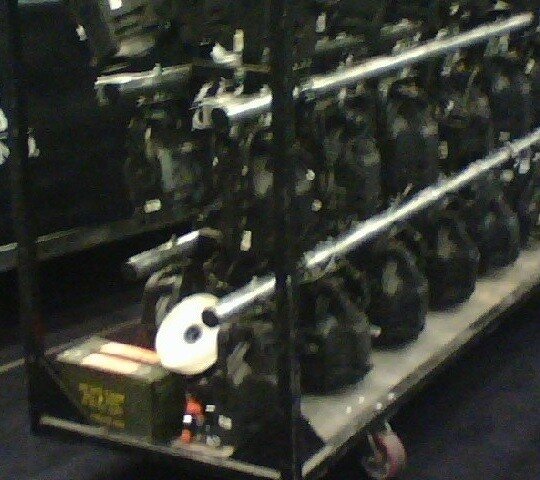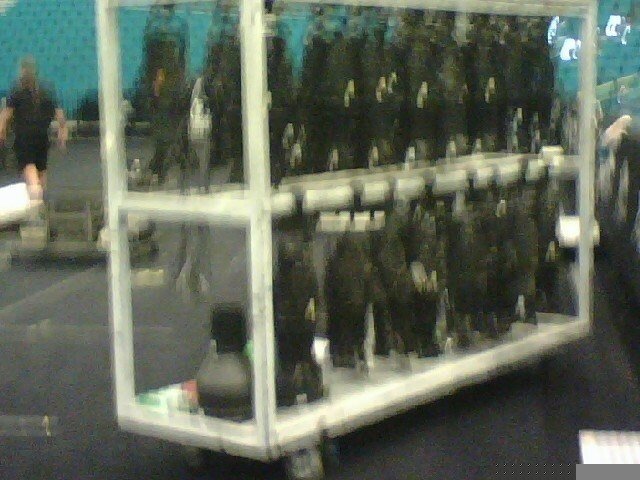I know there is a thread about storing lights, but this is a little different.
Today i came into work and my Production Manager grabbed me and showed me that over the weekend a rental group had tried to move one of our massive meat racks, and in the process had accidentally caused the thing to collapse! It wasn't their fault, the welds that held the bases of the sched 40 frame had snapped while going over a door stop. Now we need to build new meatracks, as nobody has any confidence in the old design.
The old design consisted of a 1 1/4" steel box tube base with 6" castors, and schedule 40 steel pipe screwed into cast iron flange bases. The cross beams for hanging instruments were also sched 40 pipe, attached with Roto Locks.
In examining the old design, we realized that the reason it broke was because the cast iron didn't weld very well to the steel base, and the rotos allowed the entire frame to rotate and fall.
We think that if we could find steel flanges it might hold better, but i am hesitant to make a quick fix without examining other possiblities. I am looking into builiding the corner supports out of 1 3/4" and 1 1/4" steel box tube and having a larger area for the welds to hold, but am not sure about how well the sched 40 pipe will seat and hold with welds.
Oh, and the dimensions for the meat racks are: 3' wide, 6'8" tall, and 8' long. they currently have six rungs for instruments and can hold around 60 or 70 S4's, depending on how there loaded, but i think that they can be made to hold an extra two rungs for another 20 or so lights.
Basicallay i jut want to know what other people and places use for meat racks, and input on the Ideal meat rack. Thanks.
Today i came into work and my Production Manager grabbed me and showed me that over the weekend a rental group had tried to move one of our massive meat racks, and in the process had accidentally caused the thing to collapse! It wasn't their fault, the welds that held the bases of the sched 40 frame had snapped while going over a door stop. Now we need to build new meatracks, as nobody has any confidence in the old design.
The old design consisted of a 1 1/4" steel box tube base with 6" castors, and schedule 40 steel pipe screwed into cast iron flange bases. The cross beams for hanging instruments were also sched 40 pipe, attached with Roto Locks.
In examining the old design, we realized that the reason it broke was because the cast iron didn't weld very well to the steel base, and the rotos allowed the entire frame to rotate and fall.
We think that if we could find steel flanges it might hold better, but i am hesitant to make a quick fix without examining other possiblities. I am looking into builiding the corner supports out of 1 3/4" and 1 1/4" steel box tube and having a larger area for the welds to hold, but am not sure about how well the sched 40 pipe will seat and hold with welds.
Oh, and the dimensions for the meat racks are: 3' wide, 6'8" tall, and 8' long. they currently have six rungs for instruments and can hold around 60 or 70 S4's, depending on how there loaded, but i think that they can be made to hold an extra two rungs for another 20 or so lights.
Basicallay i jut want to know what other people and places use for meat racks, and input on the Ideal meat rack. Thanks.











